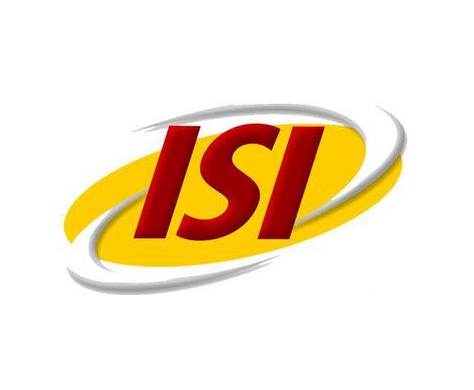دانلود رایگان مقاله لاتین بینش Xerox PARC از سایت الزویر
عنوان فارسی مقاله:
مزایای سازگاری و تعهد صلاحیت: بینش Xerox PARC
عنوان انگلیسی مقاله:
Structural ambidexterity and competency traps: Insights from Xerox PARC
سال انتشار : 2016

برای دانلود رایگان مقاله بینش Xerox PARC اینجا کلیک نمایید.
بخشی از مقاله انگلیسی:
2. Structural ambidexterity, dynamic capabilities and network theory
Ambidextrous organizations are defined as those able to compete by both exploiting their current capabilities and exploring new ones (Cao et al., 2009). Ambidexterity has been considered particularly relevant in conditions of environmental volatility and uncertainty as it helps firms maintain their strategic agility by being both aligned to the existing environment and adaptive to possible turbulence. This balance of exploration and exploitation has been associated with organizational adaptation and superior organizational performance over the long term, especially in knowledge intensive industries (Junni et al., 2013). Such a balancing act is applicable to a variety of organizational dimensions, such as ambidextrous product selling, that is selling both existing as well as new products that can enhance overall sales performance (Van der Borgh et al., 2015). The concept of organizational ambidexterity was initially proposed by Duncan (1976) who suggested that organizations can switch between alternative structures to support the development and then commercialization stages of the innovation cycle. Most recent studies on ambidexterity are conceptually driven by March (1991: 71) who described exploration and exploitation as two fundamentally different activities, with exploitation associated with “refinement, efficiency, selection and implementation” and exploration with “search, variation, experimentation and innovation”. The two processes are regarded as incompatible, requiring different capabilities, and entailing organizational tensions as they compete for scarce resources. Yet, March (1991) highlighted the need for a balance between the two for superior organizational performance. Later work suggested that firms overemphasizing either exploration or exploitation risk falling into failure traps or success traps respectively (Levinthal and March, 1993). Such vicious circles have been described as “unproductive schismogenesis,” a process of self-reinforcement where “one action or attribute perpetuates itself until it becomes extreme and therefore dysfunctional” (Cameron and Quinn, 1988: 6). Based on March's initial view of exploration and exploitation as two ends of a single continuum, trade-offs between the two activities have been seen as endemic. Therefore, the metaphor of ambidexterity - the capability of being equally dexterous in both exploration and exploitation activities - has been proposed as a way for organizations to manage these trade-offs (Cao et al., 2009). A key pathway to manage these tensions is known in the literature as structural or architectural ambidexterity where organizations can simultaneously manage short-term efficiency and long-term growth through the structural separation of exploration and exploitation activities in different business units; each with their own alignments and capabilities (Tushman and O'Reilly, 1996). Ambidexterity here is seen as the ability to “simultaneously pursue both incremental and discontinuous innovation … from hosting multiple contradictory structures, processes, and cultures within the same firm” (Tushman and O'Reilly, 1996: 24). The recommendation of dual structures as a means of achieving ambidexterity is underlied by early work in the organizational design literature, in particular the notion of maintaining an alignment between organizational design on the one hand, and the demands of the task as well as the environment on the other (Duncan, 1976; Lawrence and Lorsch, 1967).
برای دانلود رایگان مقاله بینش Xerox PARC اینجا کلیک نمایید.
کلمات کلیدی:
Structural ambidexterity and competency traps : insights from Xerox ... https://www.wbs.ac.uk/research/.../by/...ambidexterity-and-competency-traps/83598/ WBS is research and knowledge-led; we are one of the largest schools of our kind, with over 200 academic faculty members, almost all of whom are active ... CrossRef - Redirecting https://doi.org/10.1016/j.techfore.2016.11.014 Organizational Ambidexterity: Implications for the ... https://books.google.com/books?isbn=3834968595 W. Henning Blarr - 2012 - Business & Economics This shift between periods of exploration and periods of exploitation signifies a possible way to avoid competency traps (too much exploitation) and failure traps ... Strategic Imperatives and Core Competencies in the Era of Robotics ... https://books.google.com/books?isbn=1522516573 Batko, Roman, Szopa, Anna - 2016 - Computers Ambidexterity concept is first used by Duncan (1976) who argued that firms ... of exploration leads to competency traps, inertia, and ultimately obsolescence. Managing 'Human Resources' by Exploiting and Exploring People's ... https://books.google.com/books?isbn=1781905053 Mikael Holmqvist, André Spicer - 2013 - Business & Economics We have argued that the ideal of organizational ambidexterity which is pursued ... make people end up in competency traps of either exploitation or exploration. [PDF]Escaping competition and competency traps: identifying how ... https://www8.gsb.columbia.edu/faculty-research/sites/faculty.../bymf20161210.pdf Dec 10, 2016 - Ultimately it may also trap the firm on a local maximum and competency trap. While this ...... The performance consequences of ambidexterity.
